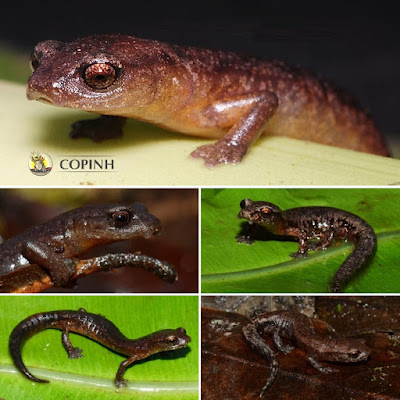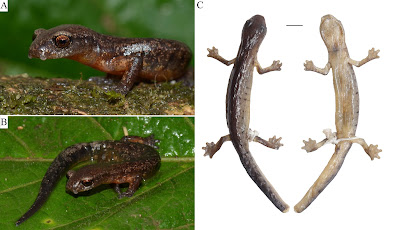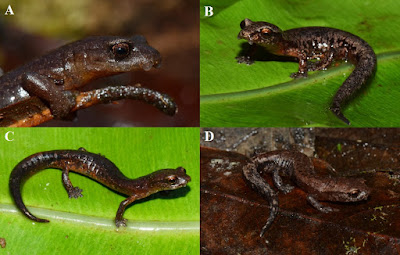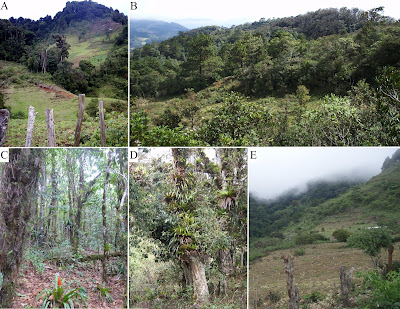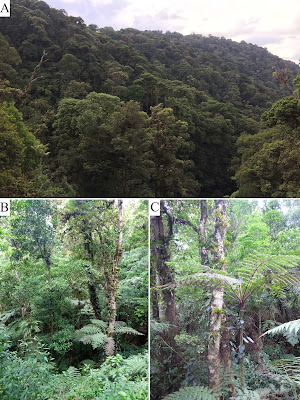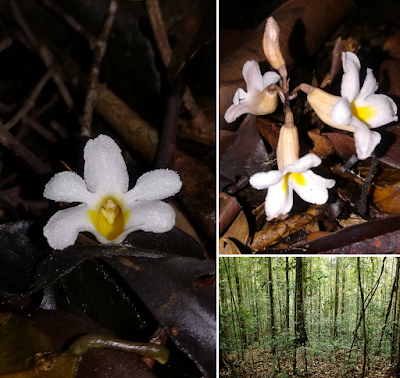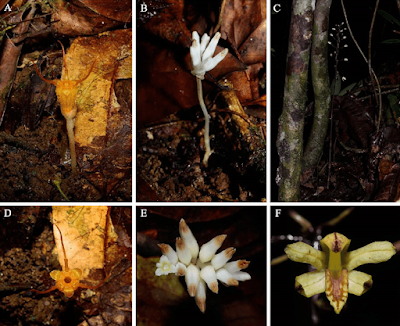[Most Recent Entries] [Calendar View]
Sunday, May 3rd, 2020
| Time | Event | ||||
| 6:50a | [Herpetology • 2020] Bolitoglossa copinhorum • Integrative Systematic Revision of Bolitoglossa celaque (Caudata: Plethodontidae), with A New Species from the Lenca Highlands of Honduras Abstract The diversity of the tropical climbing salamander genus Bolitoglossa (Magnadigita) in Honduras has been underestimated historically, with 11 new species having been described in the past quarter-century. Bolitoglossa celaque is known to occur in three disjunct mountain ranges across the Lenca Highlands region of southwestern Honduras, and previous studies have independently demonstrated differences in mitochondrial genealogy and genome size between populations to the east and west of the Mejocote–San Juan Depression. Sampling from all three mountain ranges represented two genetically distinct clades: one associated with the vicinity of the type locality, Montaña de Celaque, and the second consisting of several eastern populations from the departments of Intibucá and La Paz. Distinctiveness of these two clades was further investigated and supported by analyses of morphological variation, geometric morphometrics of foot morphology, and comparative osteology. Based on congruent signals from each line of evidence, we restrict the taxon B. celaque to Montaña de Celaque and describe the eastern populations as a new species of Bolitoglossa. KEYWORDS: Bolitoglossa copinhorum sp. nov., Chortís Block, comparative morphology, Geomorphic morphometrics, Integrative taxonomy, montane forests, Nuclear Central America, osteology, phylogenetics Michael W. Itgen, Stanley K. Sessions, Larry David Wilson and Josiah H. Townsend. 2020. Integrative Systematic Revision of Bolitoglossa celaque (Caudata: Plethodontidae), with A New Species from the Lenca Highlands of Honduras. Herpetological Monographs. 33(1); 48-70. DOI: 10.1655/HERPMONOGRAPHS-D-19-00001.1 | ||||
| 7:37a | [Botany • 2020] Gastrodia gunatillekeorum (Orchidaceae, Epidendroideae, Gastrodieae) • A New Species from A Lowland Rainforest of Sri Lanka
Abstract Gastrodia gunatillekeorum, a new species in the family Orchidaceae, is described and illustrated from a tropical lowland rainforests of Sri Lanka. It is morphologically close to G. spatulata which is endemic to Indonesia owing to the white flower front with yellowish-orange colour on the inner wall of perianth tube and free part of perianth tube reflexed backwards. However, these two species can be very well differentiated on the basis of spathulate to linear petals which are shorter than sepals, fused only at the base and present inside the perianth tube; labellum elongate-elliptic and column broadest in the middle part in G. spatulata, whereas petals as long as sepals with apical 1/3rd part free (rest fused with sepals) and reflexed backwards, labellum rhomboid in shape, column broadest towards the apex in G. gunatillekeorum. Taxonomic account, line drawing, color photographs and conservation assessment are provided for the new species. Keywords: Conservation, holomycoheterotrophic, potato orchid, Sinharaja MAB reserve, Neoclemensia, Monocots Gastrodia gunatillekeorum Bandara, Priyankara & Kumar, sp. nov. Diagnosis: Gastrodia gunatillekeorum is close to Gastrodia spatulata, in having white coloured free frontal lobes of the perianth tube and yellow-orange colouration on the inner side of the perianth tube however, the former can be distinguished from latter in having perianth tube formed by fusion of both petals and sepals to almost 2/3rd of their length with 1/3rd of the apical lobe broadly ovate and slightly reflexed backwards (against perianth tube made mainly of sepals, with much shorter spathulate to linear petals fused to the sepals only at the base and upper part lying within the perianth tube in latter); labellum rhomboid shaped (against elongate-elliptic); column broadest towards the centre (against broadest towards the apex) and U-shaped stigma (against V-shaped). Etymology: The species epithet is an eponym in the Latin genitive plural honouring the pioneer forest ecologists of Sri Lanka, Prof. Nimal Gunatilleke and Prof. Savitri Gunatilleke (University of Peradeniya) in appreciation of their dedication and decades of philanthropic work on the forest ecology and conservation in the region.
Champika Bandara, Theja Priyankara, Anusha G. Atthanagoda, Tithira Lakkana, Sisira Ediriweera and Pankaj Kumar. 2020. Gastrodia gunatillekeorum (Gastrodieae, Epidendroideae, Orchidaceae), A New Species from A Lowland Rainforest of Sri Lanka. Phytotaxa. 436(1); 55–62. DOI: 10.11646/phytotaxa.436.1.5 |
| << Previous Day |
2020/05/03 [Calendar] |
Next Day >> |
